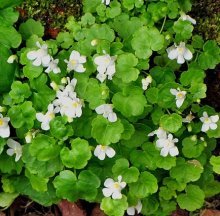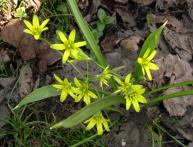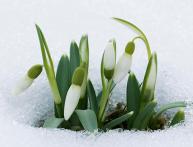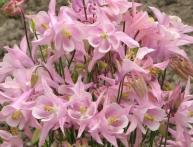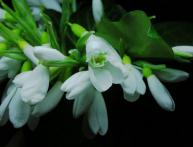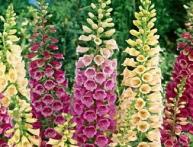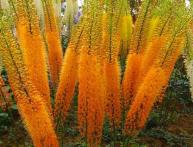Universal cymbalaria
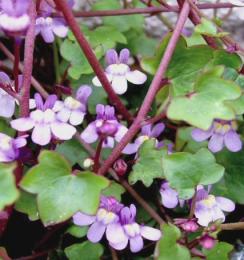
Among indoor plants, there are those that are distinguished by their unpretentiousness, versatility and ability to adapt to any conditions. One of these is called Cymbalaria. This perennial plant is a ground cover. Once it appears in someone's home, it remains there forever. Moreover, it can coexist in the same pot with other flowers, without causing inconvenience and without conquering someone else’s soil.
Content
Amazing abilities of cymbalaria and plant characteristics
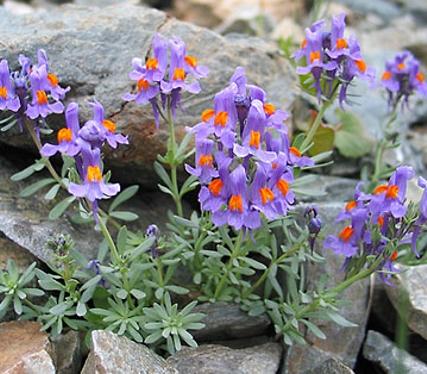
In appearance, cymbalaria seems fragile and delicate, its flowers are somewhat similar to violets and snapdragons. In fact, under this mask of defenselessness lies a plant capable of quickly multiplying and growing. At the same time, its small-sized roots are located almost on the surface of the soil, so it can be planted with other flowers. By the way, it got its name due to its similarity with the ancient Greek musical instruments - cymbals.
Another interesting feature of cymbalaria is that it can be used to determine the level soil moisture. If there is little water, then its leaves begin to droop. Moreover, all you have to do is water the plant, it almost immediately comes to life and straightens out.
As already mentioned, cymbalaria flowers are a bit like violets. The color scheme is usually white with a purple tint. Moreover, it blooms almost all year round, especially if it grows near a window.The stems are usually thread-like and hang freely from the pot. The length reaches 5 centimeters. The leaves are ivy-shaped, bright green with dark purple veins.
Plant cymbalaria in the same pot with another plant, and cymbalaria will adapt to the conditions of its neighbor. He likes the sun, and she will also be happy with it. At the same time, its flowers will acquire a bluish tint. He loves the dark, she will too feel comfortable in the shadow. The miracle flower can easily overwinter on a cold windowsill. At the same time, its leaves seem to protect themselves from the cold, becoming glassy. But with the arrival of warmth they will return to their previous state.
When the flowers fade, a box of seeds will appear in their place. Over time, it will open and release its contents, which can be used for further propagation of this flower. You just need to collect the seeds and shake them into a suitable pot. After a short period of time, the soil will be covered with bright green shoots, and soon the familiar vines will be hanging down.
Although over time, the cymbalaria itself will settle in neighboring pots. Because its seeds are so light that they are easily transported by air flow. The green mass will grow and, of course, old stems and leaves will remain under it. They need to be removed, but over time it is better to plant a new flower.
To be fair, cymbalaria is a weed and can seriously compete with weak and stunted plants. But at the same time, it can revive any bare soil. For example, you have a ficus growing, and under it is not bare soil, but a carpet of cymbalaria. It looks beautiful and unusual.
How to sow, water and care
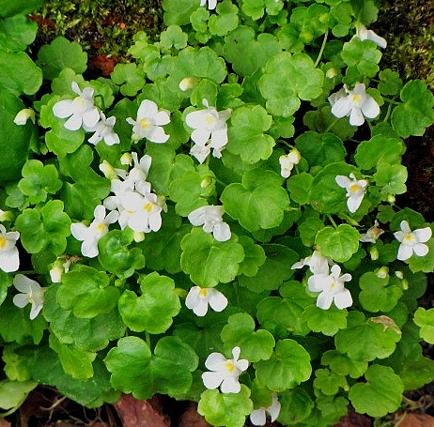
Planted out Cymbalaria usually in the spring.Germination temperature should reach +20. With the onset of spring, it is one of the first indoor plants to move from a warm room to the balcony.
As already mentioned, it is enough to scatter the seeds on the surface of moist soil.
There is no need to cover it with anything and sprinkle it with earth too.
In order for cymbalaria to actively bloom and grow, it is enough just to trim the overgrown stems. And the more you do this, the more intensively the green openwork carpet of the plant will spread. At the same time, cut stems can easily take root in moist soil.
Despite the fact that cymbalaria is unpretentious, it loves water. Therefore, you need to ensure that the soil underneath is always slightly moist. But don't overdo it. Excessive watering can cause rotting of the stems and roots.
Cymbalaria can also be grown in the garden:
- It is usually used as a decorative decoration for alpine slides and stone walls. With the help of its thread-like stems, it penetrates even the smallest cracks and, growing, covers the entire surface.
- Can he plant her? in garden pots and hanging baskets. It will beautifully “hang” from them, adding originality to the landscape design.
- In the garden it can get along well with speedwell, sedums, straschis and various types of ferns.
- Cymbalarias will look great as border plants. Forming living green mats, they will add originality to the entire garden composition. You can stop it from spreading actively just by trimming the overgrown shoots.
Despite its unpretentiousness, cymbalaria may not survive a harsh winter and freeze. But don't forget about its vitality. With the onset of warm days, it will come to life again and begin to bloom.At the same time, it is able to quickly restore its former strength and grow even more extensively. It is planted with the onset of warm days, around April-May.
Diseases
Cymbalarias are little susceptible to disease. The most dangerous enemy for them is the spider mite, which can appear where it is too dry and warm. Therefore, make sure that the soil under the flowers is always moist. Although the stems, densely covering it, themselves store water well.
More often spider mite dangerous for those plants located on the balcony. There are all conditions here: warm, dry and comfortable. Therefore, do not forget to water the plants periodically.
From all of the above we can conclude that growing cymbalaria is not difficult. At the same time, this miracle flower can decorate any home or garden interior. At the same time, it can be used to test your design abilities.
How to make a flower bed of ground cover plants in the video:
Interesting information about the vegetable garden


